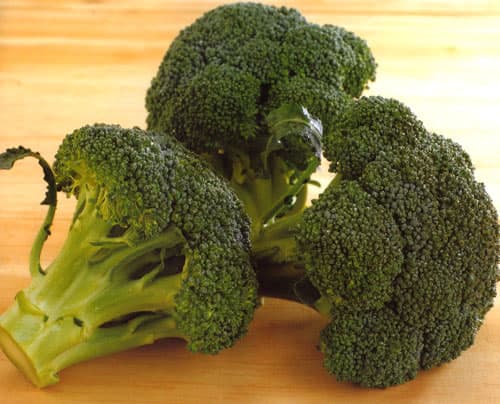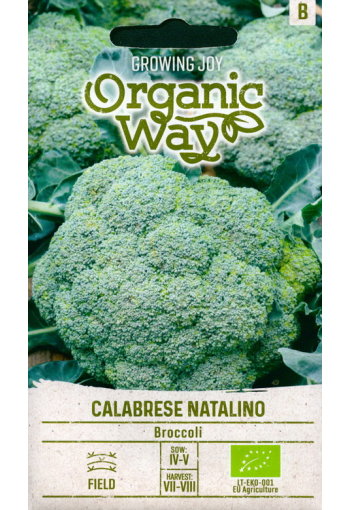Ex Tax: 1.10€
A fertile plant with a mild taste. A very valuable vegetable used fresh, stewed or frozen. Grown in greenhouses for early harvest or outdoors for late harvest.
For harvesting, it is sown all summer from early spring to mid-summer. Broccoli can be harvested in late autumn, even after frost.
1,0 g = 300 seeds.


Green Sprouting Calabrese Broccoli. Bot.: Brassica oleracea L. convar. botrytis var. italica.
In Italian, the word "broccoli" means "short shoots". Indeed, in broccoli, on short, strongly leafy peduncles, many smaller heads are formed than in cauliflower. These shortened shoots with succulent leaves and underdeveloped flowers are eaten. Broccoli buds contain 2–3 times more vitamin C and 2 times more dry matter than cauliflower buds, and the shoots are richer in sugars. There is more methionine in it than in color, and 4 times less purine substances that are harmful to patients with gout and those suffering from kidney stones. Broccoli fiber helps to cleanse the body of radionuclides.
Broccoli is a faster and more productive crop than cauliflower, and less demanding on growing conditions. Only 30–35 days pass from the emergence of seedlings to the formation of a head (for early varieties). Early varieties, as a rule, form a medium-sized, loose central head and at the same time lateral heads in the axils of the leaves, while late varieties initially form a larger and denser central head, while the lateral ones are formed after cutting the central one.
Sowing seeds.
1. Select the seeds, disinfect them in hot water (+48+50°С) for 15–20 minutes and then refrigerate. After that, sow them in 9 cm pots filled with compost soil to a depth of 1 cm. It is advisable to powder the soil with 1 cm of ash from above.
2. Put the pots in a greenhouse or in a special thermostat for seed germination, standing on a bright window, closer to the glass. Remember to periodically check if the seeds have germinated. Usually seedlings appear on the 3-4th day after sowing.
3. After 10 days, the seedlings need to be thinned out, leaving one plant in a pot. Before planting in the ground, 30-day-old seedlings must be hardened off. By the time of planting, your seedlings will have 5-6 leaves. The distance between rows when planting is 50–70 cm, between plants in a row is 25–30 cm.
* This cabbage does not like acidic soils, does not tolerate high and low temperatures and its sudden changes. Cultivation for a long time at a temperature of +2 + 8 ° C leads to the shooting of plants, a decrease in the quality of the heads, and in dry and hot summers they quickly crumble, forming flowers. It also has a negative attitude towards thickening of broccoli - dry air sharply reduces the yield and quality of products.
Broccoli does not do well when re-grown in the same place. Broccoli prefers fertile, loamy, floodplain soils. It responds well to the application of manure and other organic fertilizers (8–10 kg/m2) and mineral fertilizers (40–80 g/m2 of potassium salt and superphosphate). Responsive to watering, the best predecessors for it are carrots, legumes, potatoes, greens.
The optimum air temperature for growing broccoli is +16+25°C, soil moisture is 70% of the total field capacity, air humidity is 85%, soil pH is 6.5–7.5. Broccoli develops quickly, no need to wait for the umbrella to reach a large size. While the buds are closed, not isolated, broccoli is tender and very tasty. With the discrepancy of the buds, the taste worsens, but even in this form, broccoli can be eaten.











